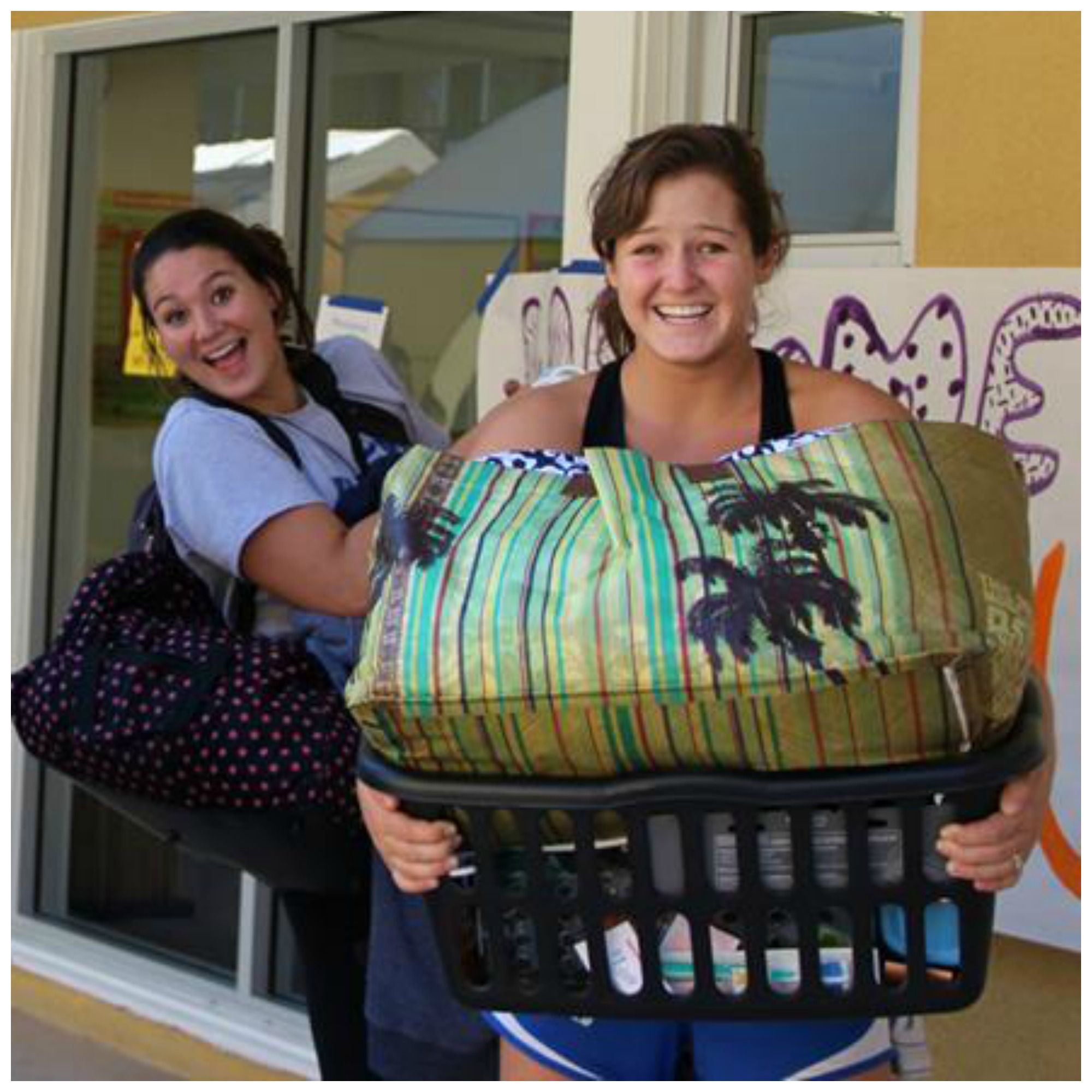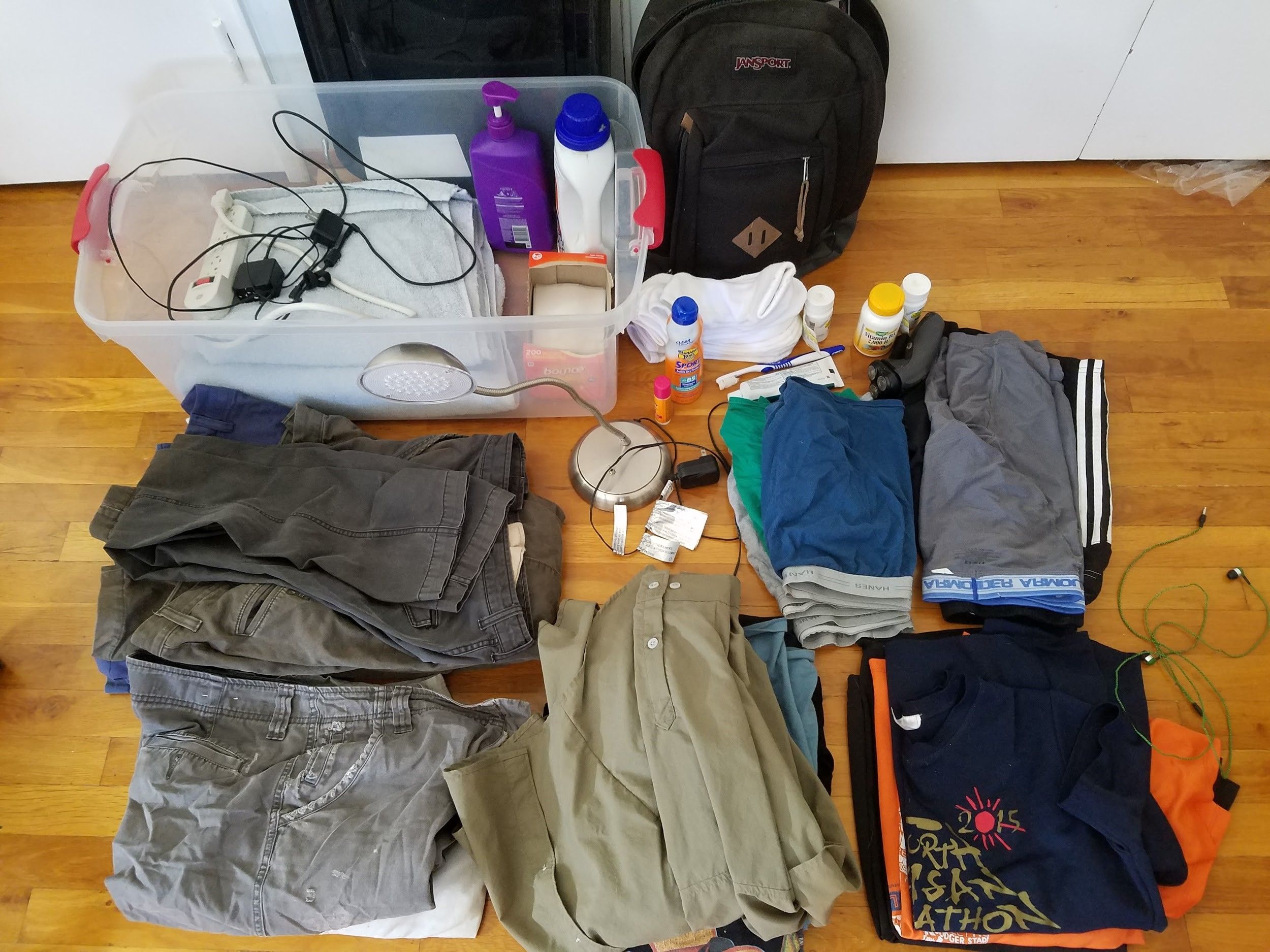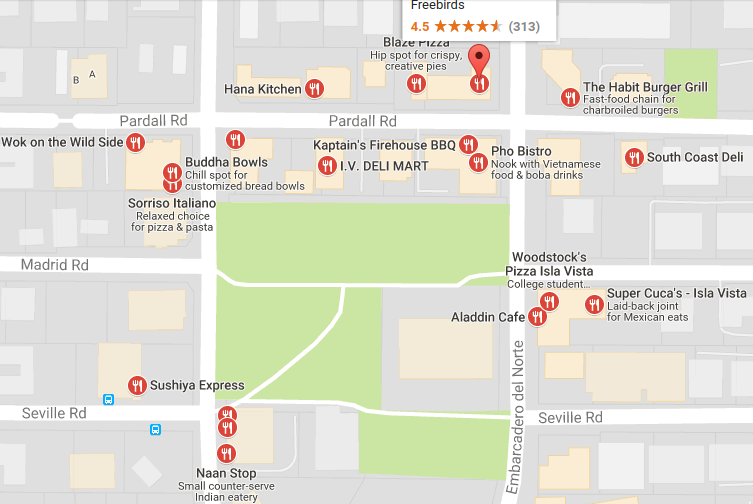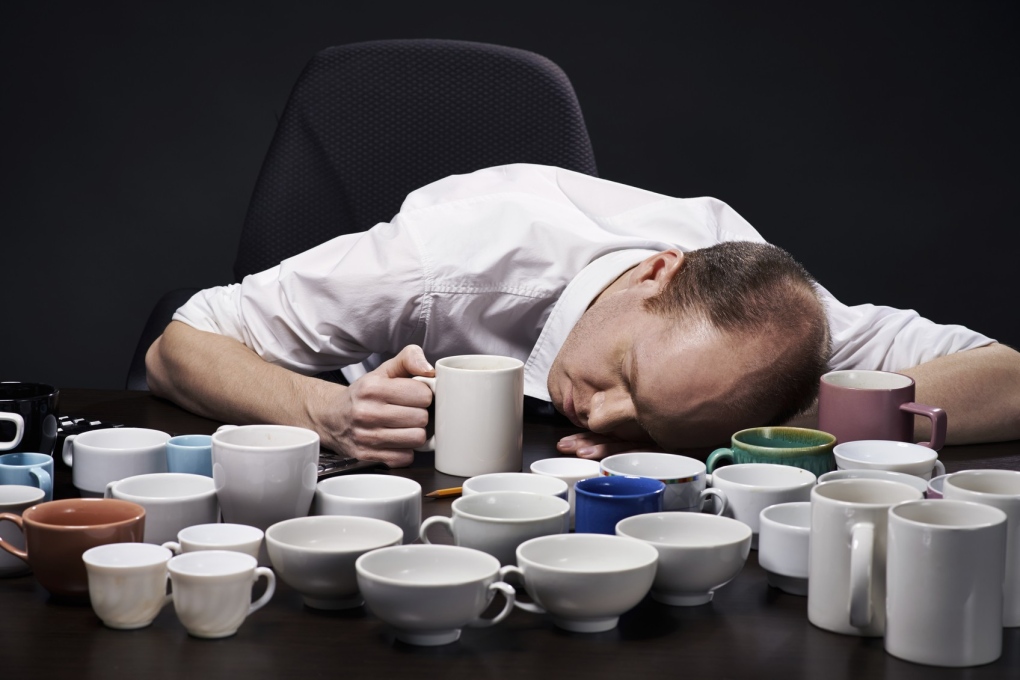Starting your Dorm life: What’s Included and What to Bring
Wondering, worrying about, and overthinking what to bring to college? Well put your mind at ease, because it’s easier than you think, and after reading this you won’t be making the same mistakes so many students make, year after year.
The first and foremost tip I have for you, my classmate, is pack LIGHT, and pack just what you NEED. Roommates, their own belongings, and the bustle of college life will soon show you that a few and well-chosen essentials will be all you need to help make your time here sweet and successful.
The suites here come ready-to-go with most home furnishings: Your bedroom includes a bed frame, twin XL mattress, a chest of drawers, and a desk and chair (some rooms have shared desks and chairs). That leaves for you to bring along bed clothes (twin XL sheets, pillow, comforter), and study supplies, such as your computer, a desk lamp and headphones (personal recommendation!). A great resource provided for residents here at Trop is the 24-hour study lounge, where you have full access to a couple of desktops as well as a printer (so no need to bring one!) Some items that are easy to forget are a laundry basket and laundry supplies, which can be used in the laundry room on site. For your bathroom, you would want to bring a good amount of toilet paper, and a shower caddy to keep all your bathroom stuff organized and separated from your roomies’. Plungers are provided in the restrooms, as well as a light housekeeping service twice a month.
The living room comes similarly outfitted with couches, end/coffee tables, and a flat screen TV. Some other super-useful utilities include a microwave and mini-fridge, also for the entire suite to share. This means you can definitely bring some cup-o-noodles, cereal or late night snacks to store in the fridge or small shelves in the living room. Other than all listed above, consider bringing what makes you you: posters, photographs, or other such decorations are easy to transport and add an extra homey feeling to your new room. Also, now that you’ll be living in the beautiful little beach town of Isla Vista, a beach towel, sunscreen and a bathing suit are minimal necessities to enjoy the ocean in our backyard. Most locals around here also travel around town and on campus by foot, longboard, or bicycle (my personal choice!), so a bike or a board are definitely not going to be catching dust. (Useful tip: if you’re going to bring a bike, make SURE you buy a good U-lock for it!)
So that’s it! Check your suitcases twice to make sure you have everything you need (and not much more!), and remember that anything you’re missing can be purchased nearby or brought up the next time you go home. Don’t hesitate to call the Tropicana Front Desk for any further questions on what’s included, and get ready to start some of the best years of your life!
Packing List (in brief)
What’s Included:
- Twin XL bed
- Dresser
- Desk (may be a shared desk, ask our leasing department if your room type has a shared desk due to occupancy)
What To Bring:
Bedroom
- Bed clothes: Twin XL sheets, pillow, comforter
- Laundry Basket and other laundry supplies
- Study stuff: computer, headphones, desk lamp, stationary Clothes hangers
- Optional: decorations, white board, shoe organizer, command strips, rugs, mirror, personal mini-fridge
Bathroom
- Shower caddy
- Toilet paper
- Optional: bath rug, air fresheners
Other Useful Items
- Bicycle (with U-lock!) or longboard
- Beach towel
- Storage bins (plastic work best!)
- Small snacks (granola bars, cereal, or instant noodles are great)
- Optional: gaming systems




